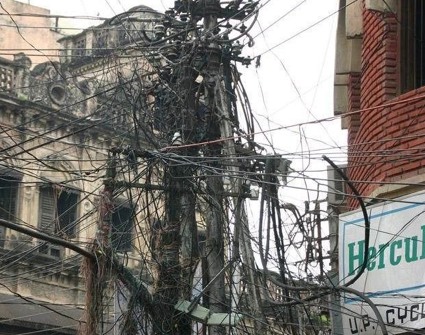Gotta respectfully disagree with some of the previous advice.
If a properly wired circuit has a 15 amp breaker, then the safe load is any load less than 15 amps, which is when the breaker breaks. If 14.9 amps is unsafe, then why would they use a 15 amp breaker? The reason they suggest using 80% of max rating is not for safety, but to reduce the irritation of breaker trips when current surges in the circuit due to motor starts and the like cause a momentary spike over the breaker amperage. If, for example, you put devices rated at 14.9 amps together on a 15 amp circuit, you are going to eventually trot to the basement to reset that breaker because surges will take you over 15 amps.
So now let's talk about what the breaker is doing. What the breaker is doing is protecting the wire in the wall. That's it. What happens after the electricity leaves the wall is not the concern of the breaker. On a standard 15 amp breaker circuit with 14 gauge wiring, the breaker will not break unless 15 amps or more travels through the breaker. It doesn't matter how the 15 amps or more are connected - a single device pulling 16 amps. 20 devices pulling 1 amp each.
So where is the real danger? The real danger is when you have Joe 6 Pack and Suzy homemaker plug something in to a 15 amp receptacle that is itself dangerous. For example, if somebody puts a very thin cord on a lamp and then puts a 150 watt bulb in the lamp, the 15 amp breaker will not trip (150 watts is about 1.4 amps on a house circuit), and the bulb will pull 150 watts through a very thin cord. That will result in the cord heating up, which could result in melting, fire, arcing, and the like. All bad.
So now let's get to your specific case. What's the danger? Well, if the power strips are rated at least at the level of the circuit, then you should be fine. That is, if you are on a 15 amp circuit and the power strips are rated at least at 15 amps, then, theoretically, you should be able to plug 20 in a row and have no issues (other than voltage drop), because it would be impossible to overload your powerstrips without also overloading your breaker, which would trip at 15 amps - for which the circuit and both powerstrips are rated.
A problem will arise if you are using power strips rated at less than the level of your circuit. Let's say, for example., you are using a 20 amp circuit. You then put a power strip on it that is rated at 15 amps. If that power strip does not include a 15 amp breaker, or if the power strip has a faulty breaker, then you can draw over 15 amps - say 18 - without the main breaker breaking, thereby putting the power strip over its rating and risking overheating and fire. 18 amps is tough to draw with typical household items, however, which is why they don't want you plugging multiple strips together. If you daisy chain enough together, you'll eventually pull more current than the strip(s) can handle, and, for the reasons stated above, that is problematic.
Best bet - spend good money on a power strip that is rated at the same amperage as your circuit, that includes sufficient receptacles for all of your needs, and that has a built in breaker. Spend the money, then keep it for life.


